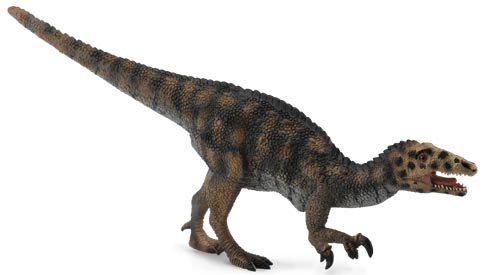Rare Australian Dinosaur Bone Questions Accepted Theory on Break-up of Gondwana
Dinosaur Discovery “Knocks” Continental Drift
A new interpretation of a fossilised arm bone of an Australian dinosaur has brought into focus the on-going debate about the break up of the southern super-continent Gondwanaland.
In a paper published in the scientific journal “The Proceedings of the Royal Society”, Nathan Smith of the Field Museum in Chicago, Illinois, argues that a single fossilised dinosaur bone found in Australia links this country to South America. Dating of the fossil indicates that Australia may have still been connected to the rest of the southern super-continent of Gondwanaland much later in the Cretaceous than first thought.
Gondwana
Conventional scientific theory states that the land mass in the southern hemisphere, known as Gondwana or Gondwanaland began to break up during the Cretaceous period. The land that was to form South America, Africa, India, Antarctica and Australia began to split apart under the impact of continental plate forces.
Australia remained attached to Antarctica until approximately 95 million years ago, until the start of the formation of the south-east Indian ridge (a mid-ocean spreading ridge), began to tear these two landmasses apart. As new ocean floor was created at this ridge, Australia was gradually separated from other areas of land and pushed northwards, towards its present position.
However, in the Field Museum study, a single bone, identified as coming from a dinosaur called a Megaraptor (the name means “big thief”), questions the accepted theory on the timing of the break up of Gondwana. If the interpretation by the Chicago team is validated, this sheds new light on the origin of Australian dinosaurs and may indicate that land bridges existed between Australia and other parts of the splintering southern continent.
Examining Arm Bones
The single bone, an ulna (one of two bones in the forearm) has been dated to approximately 110 million years ago, it shows a striking similarity to the ulna of a Megaraptor, a large carnivorous dinosaur known exclusively from South America.
This study has suggested that Australia remained connected to the rest of Gondwanaland far later than originally thought and may help explain the diverse fauna and flora of Australia in the Late Cretaceous.
Commenting on his paper, Smith stated: “It doesn’t rewrite the biogeographic history of the early Cretaceous in Australia, but it adds an important well-constrained data point showing a South American connection”.
The unnamed Australian fossil is about 50% of the size of the corresponding bone in Megaraptor fossils, unearthed in Argentina, but it is not clear if the animal was a juvenile or an adult of a smaller related species. Such ontogenic information is difficult to infer from a single fossil bone. The fossil has been dated to approximately 110 million years ago (Albian faunal stage), the fossils of Megaraptor from Argentina are dated to the Cenemanian faunal stage, some 20 million years later than the Australian fossil.
The picture above shows a CollectA Australovenator replica, an animal that may have been part of the Megaraptora clade of theropod dinosaurs.
To view the CollectA prehistoric animal model range: CollectA Age of Dinosaurs Popular Range.
Australian Dinosaur Bone
Professor Pat Vickers-Rich of Monash University, Victoria, casts doubts upon the Chicago study. Professor Vickers-Rich has worked extensively on the Dinosaur fossils found at the famous Dinosaur Cove and East Gippsland sites in Victoria state. Along with her husband Tom, Professor Vickers-Rich has been responsible for the naming of a number of new Australian dinosaur genera. As to this new American assessment of Australia dinosaur origins she commented that Smith’s group were “pushing the envelope”, implying that they were trying to infer too much information from a single, isolated bone.
Yet Smith and his team take their case even further suggesting that the Australian bone tips the scales in the debate over Megaraptor’s closest relatives – shifting the evidence towards another group of carnivores, the Spinosauridae.
To read an article about a fossil discovery in Australia that may rewrite the evolutionary history of theropods: Tiny Fossil Leads to Theropod Revision.
The south American fossils of Megaraptor have a rather interesting history themselves. The first fossils of Megaraptor were described in 1998, the animal being identified as a dromaeosaur due to the large 30 cm long, highly re-curved claw found. This was first interpreted as being a sickle-like toe claw typical of the raptors. However, the discovery a complete hand in 2003 proved that the claw belonged to the first phalanx (thumb claw). A large thumb claw is a characteristic of baryonychids which are believed to be the ancestors of the later spinosaurs. Hence the conclusions draw by Smith and his colleagues from the study of the ulna found in Australia.


